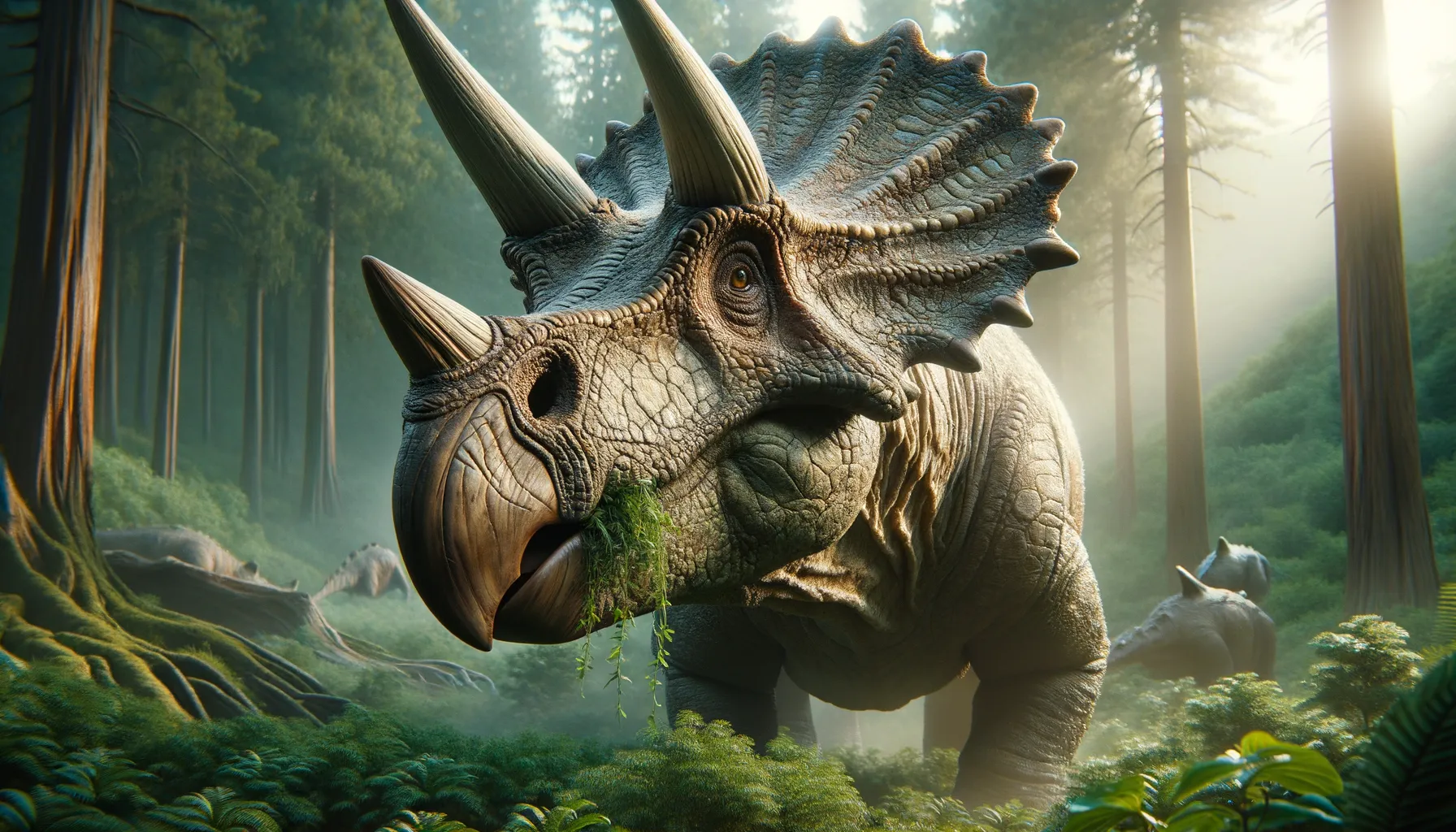
Arrhinoceratops
A gentle giant of the ancient world.
Period
Cretaceous
Length
Estimated length was about 6 meters.
Height
Approximately 2 meters tall at the hips.
Weight
Estimated to weigh around 2 tons.
Arrhinoceratops was a herbivorous dinosaur characterized by its large, bony frill and hornless nose. It roamed the earth during the late Cretaceous period, primarily in what is now North America. Known for its distinct skull shape, Arrhinoceratops belonged to the ceratopsid family. It thrived in lush environments where it fed on a variety of plant matter. These majestic creatures lived in herds, offering protection from predators like tyrannosaurs.
Diet
Arrhinoceratops was herbivorous, feeding predominantly on ferns, cycads, and conifers. Its beak-like mouth was well-suited for clipping vegetation.
Hunting
As a herbivore, Arrhinoceratops did not engage in hunting. It primarily grazed on low-lying plants in its habitat.
Environmental challenges
Arrhinoceratops faced challenges from predatory dinosaurs, forcing them to stay in herds for protection. Climate changes during the late Cretaceous period could have affected its food sources. Competition with other herbivores for foliage was also a likely challenge. The shifting of landmasses may have led to changes in their habitat and food availability.
Speed
Arrhinoceratops moved relatively slowly due to its heavy build.
Lifespan
It likely lived around 20 to 30 years.
First discovery
First unearthed in Alberta, Canada in 1923.
Fun Facts
- Arrhinoceratops was a ceratopsian dinosaur that lived about 70 million years ago during the Late Cretaceous period.
- Its name, meaning 'no nose horn face,' is a bit misleading because it did have a rounded nose horn, though less prominent than other relatives.
- Arrhinoceratops was a herbivore and likely fed on low-lying plants using its sharp beak and rows of teeth.
- This dinosaur is known primarily from a single skull found in Alberta, Canada, highlighting how rare and valuable fossil discoveries can be.
- Despite its lack of a prominent nose horn, it sported a large, ornate frill with small openings, typical of many ceratopsian dinosaurs.
- Arrhinoceratops weighed around 2 tons and was approximately 6 meters (20 feet) long, making it a formidable size for its time.
- With its frill and horn arrangements, Arrhinoceratops likely used them for display during mating rituals or to intimidate rivals and predators.
Growth and Development
Arrhinoceratops hatched from eggs, like other dinosaurs. Juveniles would have grown fairly quickly to avoid predation. Their frills and other distinct features developed as they matured. Fossil evidence suggests that they reached full size within a few years.
Habitat
Arrhinoceratops lived in lush, forested areas with abundant plant life. It thrived in regions that provided ample cover from predators. Its habitat included river valleys and floodplains. These environments offered a steady food supply and water resources.
Interaction with other species
Arrhinoceratops likely lived in herds, interacting closely with its own species. It may have shared its habitat with other ceratopsians and small herbivores. Predators like tyrannosaurs posed threats, influencing its social behavior. Its frill may have been used for visual displays within the herd.
Natural lifespan
Arrhinoceratops lived for about 20 to 30 years in the wild.
Reproduction
Reproduction was likely similar to other ceratopsians, with eggs laid in nests. Parental care might have been present, offering protection to the young. Nests were probably built in safe, sheltered areas. The rate of survival depended on environmental conditions and predation.
Social behaviour
Arrhinoceratops probably lived in herds for mutual protection. Herd dynamics might have included social interactions like displays and vocalizations. Living in groups helped with grazing and defense against predators. Social structure was likely influenced by age and size.
Fossil locations
Fossils of Arrhinoceratops have been primarily found in Alberta, Canada. This location suggests its presence in North America during the late Cretaceous. Discoveries have provided significant insight into the ceratopsid family. Fossilized remains include skull fragments which have been crucial for study.
